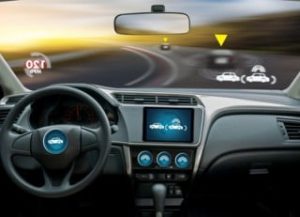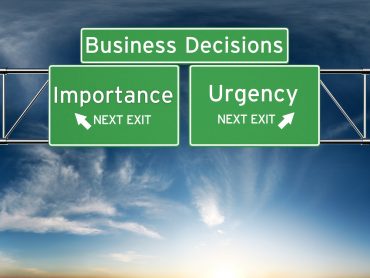
The connected car industry, including self-driving cars, is precipitating an important paradigm shift that will present new opportunities.
In Silicon Valley, it’s sometimes easy to miss the forest for the trees. Autonomous driving is shaping up to be the next “killer app,” drawing a lot of attention from investors, techies and the media.
I’m frequently asked about the computing technologies and algorithms that go into supporting autonomous driving cars. People want to know about data rates, processing power, the deep learning aspects, neural networks and so forth. In Silicon Valley, it seems people love technology for its own sake. But the push toward autonomous driving cars is not just a story about computation and deep learning.
The connected car industry, including autonomous driving cars, is quietly precipitating important paradigm shifts that will present new opportunities and therefore bear examination. In the end, the data platform providers are poised to become central players in enabling all stakeholders to generate value.
New business models and ecosystem players
The car has evolved over the past two decides with an increasing number of features and services and has also introduced new business models and stakeholders. The connected car era began in earnest in 1996 when GPS was opened to civilian use.
[ Related: Security and Connected Cars: Threat Not Limited to Autonomous Vehicles ]
Soon after, GM announced Onstar which brought new hardware and new players (e.g. Telematics Service Providers) into the equation. Thus, began the massive shifts we are seeing play out in the market today – changing business models, including that of the automotive manufacturers (OEMs) themselves.
Traditionally, OEMs operated as B2B companies. Once the cars passed to the dealerships, the OEM’s job was done. Today, the OEMs are seeing themselves as service providers with recurring revenue and insights into the entire customer journey. OEMs can leverage touch points across the entire customer journey to gain insights to help improve retention, a huge opportunity as the car industry suffers from low (less than 50 percent) brand loyalty.
Just as the smartphone was in the 2000s, today the car is becoming the new consumer platform. As features and services are introduced into the car, both OEMs and third-parties are increasing their respective footprints within this new platform and are using the opportunity to engage directly with the customer.
With increased visibility to the end-user, OEMs are now embracing a B2C mentality with an emphasis on the customer experience and with Tesla foregoing the traditional dealership model altogether and selling direct to consumers.
In addition, a remarkable number of new players, including service providers and innovative tier one and tier two suppliers are entering the ecosystem to provide new features to the driver. In the end, the value to OEMs and tier one/two suppliers comes not just from adding more computational systems and features to the car, but from the growing amounts of generated data that they can leverage to gain insights into the end user.
Compute and data out of the cloud and to the edge
For each new connected car feature or use case, the capability to aggregate and analyze car data is the bottleneck. Consider autonomous driving as an extreme example. The averagely driven autonomous car will generate about 4 TB of data per day.
[ Related: Innovation Driving Connected Cars Gears Up at Mcity ]
Even with the advent of 5G mobile networks, the sheer data volume generated by cars will preclude the ability to stream that data to the cloud or any centralized data center. Instead, much of the data will be processed and analyzed onboard the car itself with only relevant summary information being passed on to a centralized fleet management application in a data center for further analysis.
The challenge with then is to process data onboard the vehicle to make timely driving decisions while also streaming some data to a centralized analytics platform that has the advantage of aggregating data across many cars in order to gain a holistic view of how the fleet is performing. In the current phase of connectivity, the data platform providers are key to driving value for all stakeholders.
Connected cars are, therefore, accelerating a major industry trend that we see in the era of IoT – namely, the movement of compute from the data center to the edge. For example, industry estimates from IDC, Gartner and Wikibon put the growth of public cloud computing between 16 percent-19 percent compound annual growth rate (CAGR).
By comparison, the computational power onboard a car today is approximately 10 million times the level of computational power in a typical car in 1990. That’s an 82 percent CAGR. The growth of computational power onboard cars, then, is significantly faster than Moore’s Law which describes the overall growth in computational power from advancements in digital electronics as attaining about a 41 percent CAGR.
Connected cars are an example of this growth of edge computing, but they are just the tip of the iceberg. Consider, for example, Pratt & Whitney’s new Geared Turbofan Engine features an ensemble of 5,000 sensors and generates as much as 36 TB of data per engine-hour.
[Related: Why autonomous motorcycles are destined for the road ]
With an order book of 8,000 of these engines, the aggregate of the Pratt & Whitney engines will process about 2.5 zettabytes of data per year. By comparison, by the end of 2014, Facebook was generating about 219 PB of data per year. The amount of edge computation represented by connected cars and other connected systems, like engines, will soon eclipse the size of the consumer internet.
While the past decade can rightly be termed the “cloud era” with the rise of Amazon Web Services and other public cloud infrastructures figuring prominently into modern enterprise architectures, the next decade will see the growth of computation and data in the data center – both public cloud and private data centers – dwarfed in comparison to the growth of computation and data generated by and processed on edge devices, including cars.
Connected cars become the platform
In summary, as the car becomes the next consumer platform, the automotive industry will continue to grow to encompass more stakeholders and new business models. The truly disruptive applications will require the aggregation and analysis of connected car data at scale.
And as computation and data processing becomes ubiquitous with an increasing proportion taking place on the car itself, the primary challenge will be to manage the massive volume and velocity of data being generated on the car, to facilitate real-time processing of that data, and to connect the car seamlessly with the data center for offline analysis on the collection of data from entire fleets of vehicles.
It’s no surprise then that, as with smartphones before, data management platforms are placed squarely at the center of value creation in the connected car ecosystem.






























